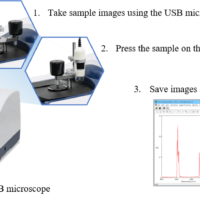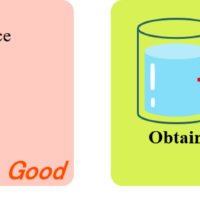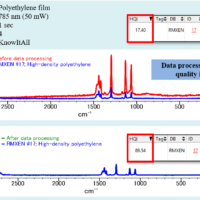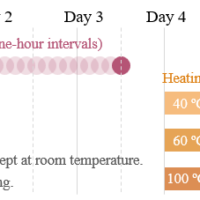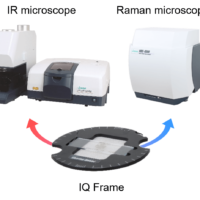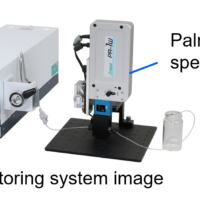Sample related
Q19. Can I measure a sample in a container?
Liquid samples are usually measured in a sample bottle or glass capillary. If the container is transparent to the laser wavelength, the sample can be measured, and samples in plastic bags and containers can be measured. However, since fluorescence and Raman scattering from the container may be observed at the same time, it is necessary to perform the measurements using a low light intensity. You can also use the macro measurement unit to measure liquid samples in a vial or square cell (Fig. 27).
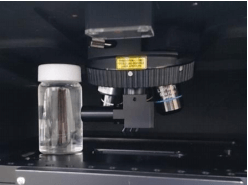
Fig. 27 Measurement of liquid sample in vial
Q20. What concentration is required for solution and powder samples?
In the case of a general solution, the standard detectable concentration is 1%. However, it depends on the sample. If there is a component that exhibits resonance Raman scattering or a component with high intensity, detection may be possible at a concentration of 0.1% or less.
Q21. Is it possible to measure a large sample that cannot fit into the sample chamber with a Raman spectrophotometer?
By connecting a fiber probe to a Raman spectrophotometer, you can measure large samples that do not fit into the sample chamber. A variety of applications are possible, such as measuring the reagents in equipment, chemical bottles, and flasks.
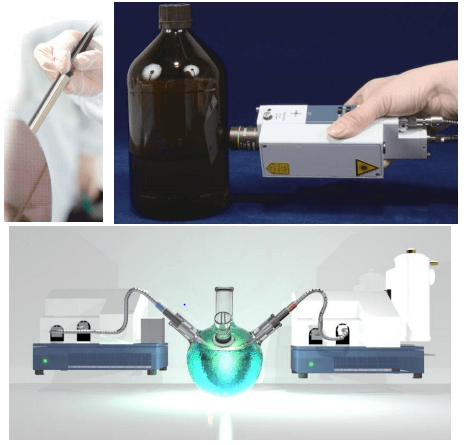
Fig. 28 Measurement of reagent (bottom) in a medicine bottle (upper left) and reaction vessel (upper right)
Q22. How can mapping measurement be applied?
Mapping measurements can be performed on samples such as medicine tablets, electrode surfaces, thin films, and crystals. As an example, Fig. 28 shows the results of measuring the distribution of medicinal ingredients in a tablet. The automatic stage imaging (QRI) installed in the NRS-5000 / 7000 series enables a wide range of measurements (such as measurement of the distribution of pharmaceutically active ingredients in analgesics) in a short time.
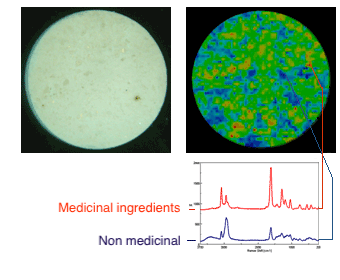
Fig. 29 Raman mapping measurement of tablet
Q23. What is the maximum film thickness that can be measured?
In the case of a general thin film, the standard thickness is 1 μm. However, it depends on the sample. In the case of graphite or a DLC film with a high Raman scattering intensity, detection is possible even at around 10 nm.
Q24. Can I measure foreign particles in a film?
If foreign matter can be observed with an optical microscope, it can be measured. The more foreign material is inside, the harder it is because it reduces the laser light intensity and that of the scattered light. Also, if the surface is rough and not clear like frosted glass, or if it is not uniform, it will be difficult to focus the laser in the sample.
The upper part of Fig. 30 shows an example of foreign matter buried in a multilayer substrate consisting of glass, adhesive, and a transparent film. Such foreign matter is difficult to analyze in cross-section due to the presence of glass, and the adhesive layer is also removed when removing the foreign matter, which makes it difficult to measure using micro-FTIR. On the other hand, in Raman measurements, the use of confocal optics enables selective acquisition of the spectrum at the position where the laser is focused. As a result, nondestructive and noncontact measurement of the inside of the sample can be easily performed without complicated pretreatment. Here, the location of foreign matter was measured in the depth direction (Z-axis direction), and information on each layer was also acquired. The representative spectra (lower figure) obtained in each layer are shown.
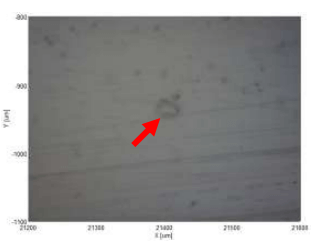
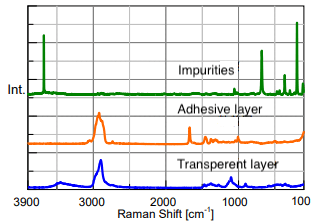
Fig. 30 Foreign matter in transparent film (left) and Raman spectrum (right)
Q25. I often hear the words G band and D band in Raman literature. What are they?
The G (Graphite) band (1580 cm-1) corresponds to an in-plane vibration of the graphite structure. The D (Disorder) band (1350 cm-1) is a band caused by defects in the graphite structure. The ratio of the G band to D band intensities is used to evaluate the crystallinity of carbon materials.
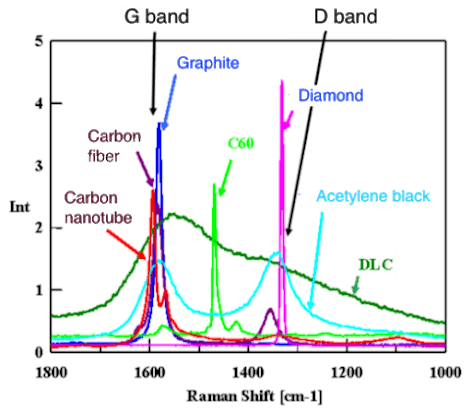
Fig. 31 Raman spectrum of carbon materials
Q26. What kind of samples easily emit fluorescence?
Typical materials that easily emit fluorescence include colored materials such as polyimide and epoxy resin. Many mixtures are often more likely to contain fluorescent samples. When fluorescence is emitted from a black sample, it is susceptible to thermal damage even by near infrared excitation, and it is difficult to measure even if the laser is changed. Generally, fluorescence is easily emitted from colored samples. If the sample is transparent, the influence of fluorescence is often small. However, even with a colored sample, the peak may be enhanced by the resonance Raman effect and it may be possible to measure it.

